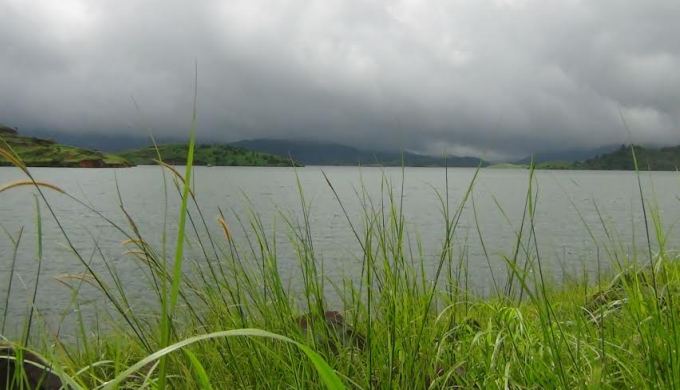The Kerala State Electricity Board is trying to install floating solar farms atop reservoirs. While the technology is promising, questions remain

Banasura Sagar Dam in Kerala has been earmarked as the site for India’s first floating solar farm. (Image by K Rajendran)
Banasura Sagar is famous for being India’s largest earthen dam. It will soon become more famous for hosting a floating solar energy generation farm.
“We have already invited expression of interest for tentative empanelment of project developers for commissioning 500 kilowatt floating solar photovoltaic systems in hydroelectric reservoirs of KSEB (Kerala State Electricity Board),” M. Sivasankar, Chairman and Managing Director, told indiaclimatedialogue.net.
“As we are well aware of the crunch for land in Kerala for setting up solar plants, floating solar farms might be an alternative. But we have to solicit workable technologies. It must be cost effective and durable. There are very few projects to imitate,” he added.
Japan is the frontrunner in the field of floating solar power generation farms. Recently Kyocera Corporation launched Japan’s largest offshore solar power plant with a generation capacity of 70 MW. Now Kyocera Corporation is constructing two more plants, part of a 60 MW floating renewable energy network.
Located far from India’s biggest coal mines, and fearing strong public opposition to hydroelectricity projects – as shown by opposition to its proposed Athirapally and Pooyamkutty projects – Kerala is looking more and more to renewable energy to tackle its crippling power shortage. The state’s 17th Electrical Power Survey pegged demand at 4,574 MW by 2016-17. KSEB’s current installed generating capacity 2,229.6 MW.
The idea of floating solar farms has been welcomed by experts. A Kyocera spokesperson says they
- generate more electricity than ground-mount and rooftop (solar) systems thanks to the cooling effect of the water;
- reduces reservoir evaporation and algae growth by shading the water;
- the floating platforms are 100% recyclable, utilising high-density polyethylene which can withstand ultraviolet rays and corrosion;
- strong design and installation technology ensures durability during storms.
However, questions about feasibility, maintainability, initial capital, technology, durability, probable environmental impacts and more remain unanswered.
K.Valsalakumari, chief engineer of KSEB, points out, “As usual, water level in dams is rising in monsoon and decreasing in summer. A floating solar power farm is feasible only if the difference between the highest and lowest water level is limited within 10 metres. We benchmarked a few dams and are awaiting expressions of interest.” The reservoirs in the shortlist are Banasura Sagar, Azhutha, Moozhiyar, Chenkulam and Vadekepuzha.
KSEB is also struggling with the high installation cost of solar power – Rs 8-10 crores ($1.3-1.6 million) to generate each megawatt. So far, this has kept private players away from the floating solar farm venture.
An added complication is the need for underwater cables to connect the generated power to the grid. Sivasankar is exploring the traditional technologies. “We are seeking suggestions from young talents in Kerala. Youngsters have put forward many innovative ideas. Traditional bamboo construction is an ideal one. It must be cost-effective and cope with the atmosphere of the dam in Wayanad.”
Thomas Ambalavayal, leader of local NGO Uzavu, is keen to carry out the bamboo experiment and support the project. “It is durable and cost-effective,” he told indiaclimatedialogue.net. “Intrusion of water in the bamboo pole will make it stronger.”
Will solar floating farms cut out sunlight and affect aquatic life in the reservoirs? Veteran environmentalist R.V.G. Menon is seeking a detailed study.
“A one-hectare floating solar farm can generate 1MW. Environmental impacts depend on the space used for the farm. Small-scale projects may not cause negative impacts. But the impact of gigantic projects needs to be thoroughly studied,” he said.
Banasura Sagar reservoir is a big tourist draw. Guides tell tourists this sits atop India’s first large mud-built dam. In future, they may add that it houses India’s first floating solar farm.


Innovative story
Congrats
dear sir I am venu from Mumbai. I one new model green power technology davalaping. This technology working time no pollution no manufacturing cost. 24 hours nonstop working. Hi KW power output. your department interest this technology please contact me. 08446362393.
Sir,
I am pursuing my b.tech in civil engineering from GEC TCR. I find this topic interesting. I wish to do my academic seminar on this topic . I wish to get information about the same. Can you help me ?
Very interesting and best source of renewable source of ENERGY.
Floating Solar Farm is suitable alternative for places where shortage of Land and availability of abundance of Water resource.
This will be cost effective
WG . Cdr RAVINDRANATH
Sir
Definitely. I am ready to help you and will connect you to the concerned persons in KSEB.You can call me in my mobile number 09447470170
With regards
K Rajendran
I’m from college of engineering trivandrum(civil engineering) topic is too interesting and give many opportunities for the renewable energy applications…. But the matter is structural stability of base for maintaining the panel systems in motionless manner…. Situations of aquatic life must take into account…… ????